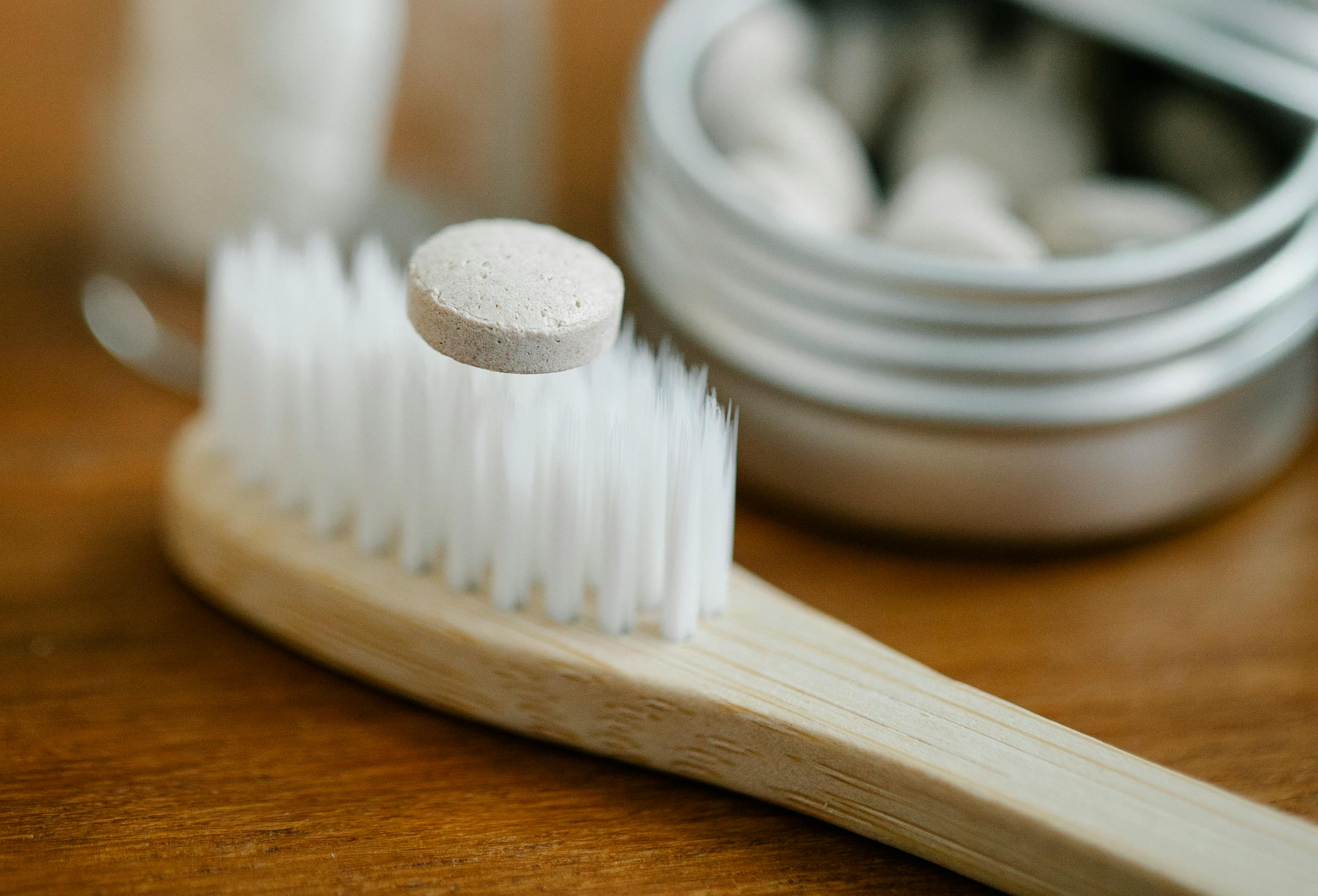Toothpaste or tablets?

More and more dental cleaning tablets are appearing on the shelves. They are promoted as a natural and sustainable alternative to traditional toothpaste. But is that so? And can they effectively clean and protect teeth?
In this blog article we delve into the rising popularity of dental cleaning tablets and compare them to conventional toothpaste. We examine their effectiveness, environmental impact, and overall benefits to help you make an informed decision about your dental care routine.
What are Toothpaste Tablets?
Toothpaste tablets are compressed powders made from various substances such as xylitol (a natural sweetener that also combats oral bacteria), calcium carbonate (a chemical compound found in limestone and snail shells), and sodium bicarbonate (baking soda). They often include cream of tartar, a common household ingredient made from tartaric acid, not to be confused with the seafood sauce. These tablets intentionally do not contain water.
Most toothpaste tablets come with “crush, brush, and rinse” instructions. First, you chew the tablets with your teeth to dissolve them with saliva. The resulting foam can then be applied to your teeth and gums with a toothbrush.
Effectiveness of Toothpaste vs. Tablets
- Composition: Most toothpaste tablets contain only about half the ingredients found in traditional toothpaste and often have little to no fluoride. Experts from the Stiftung Warentest foundation have estimated that several tablets are needed per brushing session to achieve the same effectiveness as a standard toothpaste.
- Action: From a dental medicine perspective, it’s not very clear how the components of tablets and powders are released, distributed, and ultimately act in the mouth. The foam created when chewing is often difficult to spread evenly across all teeth and tends to dissipate quickly. As a result, some teeth may not receive the same level of cleaning as others.
- Experience: Many users report that the tablet dissolves around the gums with a strong burst of menthol and then disappears quickly. Some people find it challenging to crush the tablet effectively, or that it doesn’t chew well, which can hinder proper foaming of the toothpaste.
Overall: Despite their growing popularity, there is still a lack of scientific evidence regarding the effectiveness of toothpaste tablets for oral health. There are fewer long-term studies specifically comparing their effectiveness to traditional toothpaste, which means their benefits and potential drawbacks are not fully understood yet.
Sustainability
A major criticism of conventional toothpaste is the environmental impact of its packaging, particularly plastic tubes. Toothpaste tablets offer a plastic-free alternative, provided they are not sold in plastic jars. However, the market is seeing an increasing number of environmentally friendly packaging solutions for traditional toothpaste, which significantly reduce their environmental impact.
For example, Liebwerk toothpaste addresses this issue with its innovative packaging. Our toothpaste packaging is made from 95% renewable resources, including 10% spruce wood and 85% sugar. The PICEA™ wood tube by Neopac is 100% recyclable and has a 40% improved CO2 balance compared to traditional polyethylene (PE) tubes. This makes it a more sustainable option while still providing effective dental care.
Stay tuned for more exciting content and thank you for being part of our journey towards a greener future!
